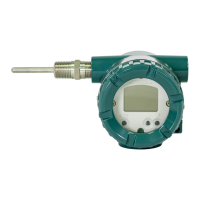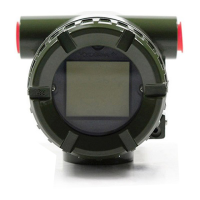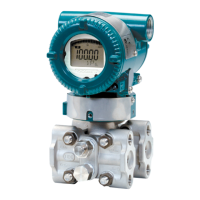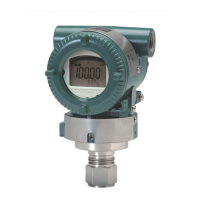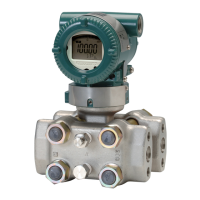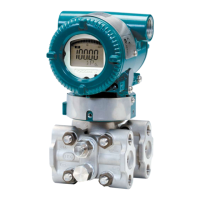IM 12B6C3-E-E
5-3-1. Parameter specific functions
Code 1 pH/ORP Choose the main measuring parameter. The option of the ORP input is used with
an inert metal electrode as measuring sensor which gives a reading directly in
millivolts. This signal can then be interpreted to give information about the
oxidation state of the process solution, and derived information like the absence
of a compound (like Cyanide for example which is destroyed in oxidizing
solutions).
Code 2 PRM.2 Enable the use of a second measuring parameter simultaneously with pH (the
main parameter).
With the correct sensor (e.g FU20), ORP measurement is possible as parameter 2
With the same sensor, rH measurement is possible as parameter 2, this is
calculated from pH and ORP and is a value which gives the oxidizing power of
the solution while compensating for the effect of pH.
This function is particularly useful for applications where both the pH and
oxidation-reduction potential of the process need to be known. The availability of
both measurements in a single system is convenient.
Note that in both cases a suitable sensor combination is needed to make this
possible. The Yokogawa FU20 (4-in-1) sensor can be used for this purpose, or a
combination of individual sensors. Contact your local Yokogawa sales office for
advice regarding applications and sensor selection.
Code 3 & 4 Z1.CHK & The EXA PH202 has an impedance check capable of monitoring the impedance
Z2.CHK of all sorts of sensor systems. In order to “fine tune” this diagnostic tool it is
necessary to set it up to match the sensors used. The default settings give a
good setup for a conventional system comprising pH glass sensor and a
reference electrode, either as individual electrodes or as a combination style
sensor. The impedance limits will need to be adjusted to get the best from
systems using heavy duty, or fast response electrodes.
The impedance measuring system has a very wide span requirement. As it can
measure in k and also in G (10
9
) there are hardware switches to set high
range (1M to 2 G) or low range (1k to 1M) measuring. As a default the
system is set to measure high impedances on input 1 (the one normally used for
the pH glass sensor input) and low impedances on input 2 (the one normally used
for the reference input). Examples of where these settings need to be changed
from the default, are Pfaudler enamel sensors which need two high impedance
settings, and Platinum sensors with a standard reference, which need two low
impedance settings.
The temperature compensation of the impedance measurement is for conven-
tional pH glass sensors. When other sensors are used, switch this feature off.
Code 5 CAL.CK The calibration checking feature, when enabled, gives security against entering
wrong calibration data. For example when aged sensors are due for
replacement, the EXA flags an error message and prevents a calibration being
completed where the subsequent measurement can only exhibit errors and drift.
Limits are set for the maximum permissible Asymmetry potential, and Slope.
5-11 Parameter setting
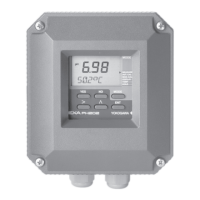
